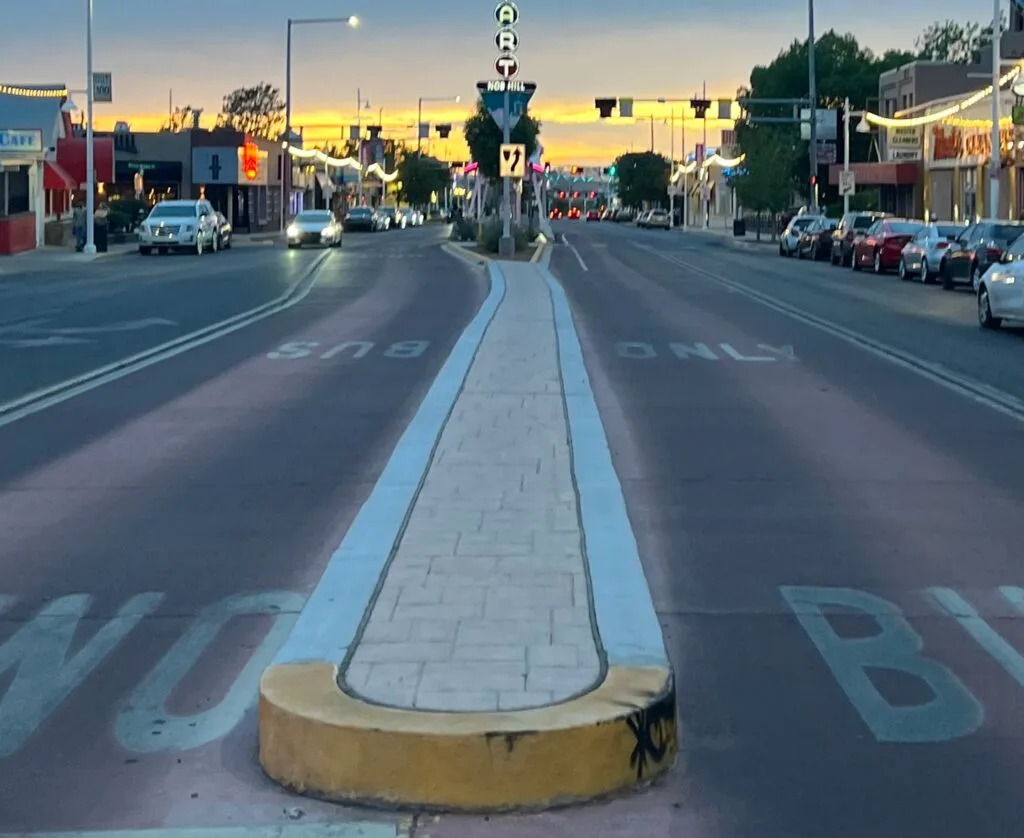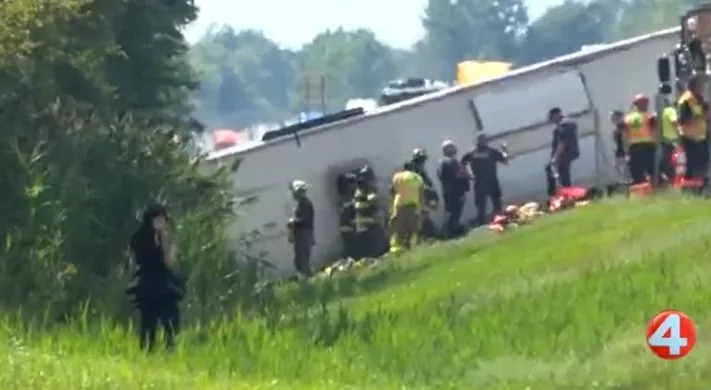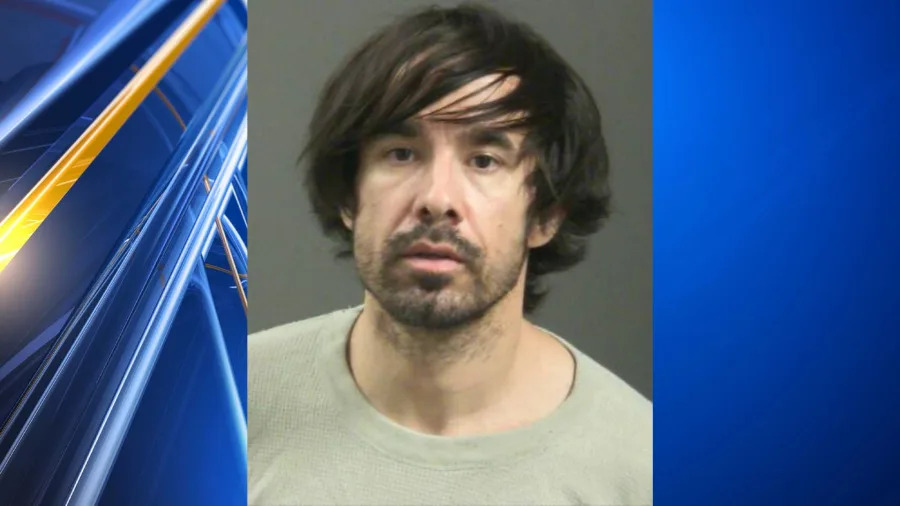
A narrow median on Central Avenue in Nob Hill in Albuquerque, pictured May 2023. The state Transportation Department on Thursday provided an update on its effort to eliminate all traffic deaths in New Mexico, which is consistently ranked first nationally for pedestrian and other traffic-related deaths. (Photo by Patrick Lohmann / Source NM)

With enough coordination, education, planning and proactivity, New Mexico can eliminate traffic deaths and no longer rank as the deadliest state for pedestrians, a state transportation official told lawmakers Thursday.
Amy Whitfield, who is spearheading the New Mexico Transportation Department’s “Target Zero” initiative, laid out the many factors contributing to the state’s place atop the list of deadliest states for pedestrians, an unwanted designation it’s had for years.
“We do not believe that any traffic fatality is acceptable in our nation. And it’s not just a phrase. It’s not just a goal. It is something that we can do,” Whitfield told lawmakers on the interim Transportation Infrastructure Revenue Subcommittee. “We can reach this goal. We can get to zero traffic fatalities.”
Pedestrians in New Mexico died at a rate of 4.97 per 100,000 residents in 2023, the most recent year for which federal data is available, according to the National Highway Transportation Safety Administration.
That’s much higher than even the other top states for pedestrian fatalities: Those states ranking between second and fifth all had between 3.2 and 3.7 deaths per 100,000 residents.
According to the federal data, New Mexico has topped the list since 2016 and been in the top five since at least 2012.
Between 2012 and 2023, 933 pedestrians were killed in crashes in New Mexico, according to the data.
In 2023, the Legislature passed a memorial creating a “Target Zero” initiative that envisioned zero vehicle-related deaths or serious injuries by the end of 2030. It recommended the Transportation Department create a position like Whitfield’s to craft a plan and propose changes to the state’s Motor Vehicle code, among other undertakings.
Whitfield on Thursday presented lawmakers with tools and procedures the department is developing to eliminate traffic deaths by 2050, both on states the road owns and on local roads.
One local road — Central Avenue in Albuquerque — has six of the top-10 most dangerous intersections in the state. Central and Louisiana in the International District is the most dangerous, according to Whitfield’s presentation, and much of the conversation Thursday involved how the state has been working with city officials to prevent pedestrian deaths there.
In 2024, 25 pedestrian crashes occurred at Central and Louisiana, where transient pedestrians often linger near the Albuquerque Rapid Transit stop. Whitfield said solving the problem at the state’s most dangerous intersection requires a mix of traffic-calming measures like pedestrian-enabled crosswalks; educational and social outreach; and improved emergency response to ensure traffic injuries don’t end up being fatalities.
DOT Secretary Ricky Serna also said the state has installed wrought iron fencing and other landscaping on land it controls to encourage pedestrians onto city-owned property like sidewalks,, which enables the city, if necessary, to use its authority to clear people for their safety.
“They can move you on to the public right-of-way, and then city ordinance will allow us to get you out of there. That’s been kind of the hope,” Serna said. “Some of the struggle that we wrangle with there is, some of those public spaces are being used as access points to services, meaning that you may have a shelter or you may have a community organization that identifies that [intersection] as where they’re convening.”
Whitfield reported progress at that particular intersection, encouraging lawmakers to drive through the intersection and make note of what the city has done.
“They’re really putting in some exciting things: Some pedestrian HAWK beacons, some calming patterns, some things that they know are going to have an impact,” she said. “And so they are working on those engineering strategies that we’re encouraging all local governments to really engage in.”







Comments